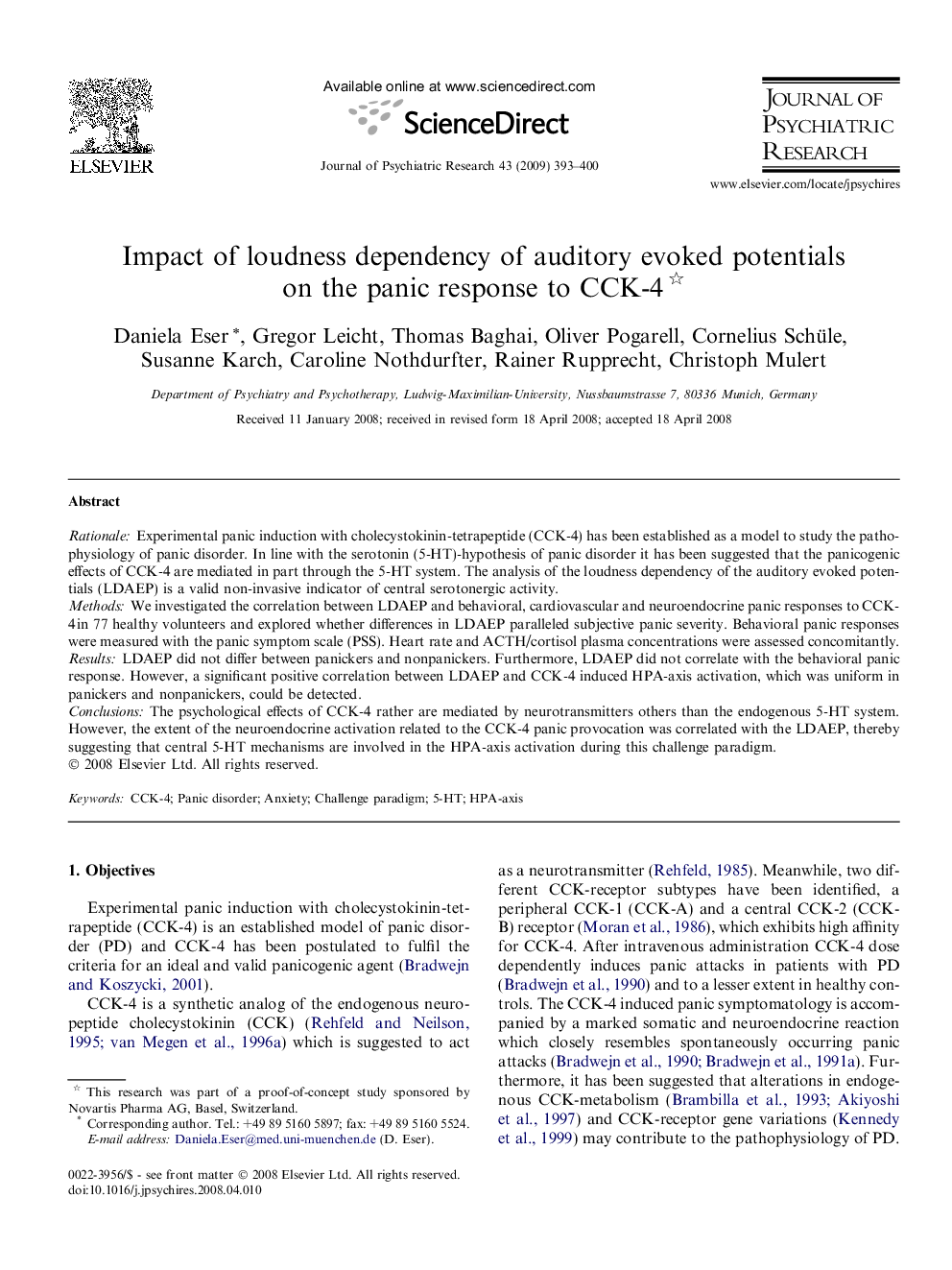| Article ID | Journal | Published Year | Pages | File Type |
|---|---|---|---|---|
| 327992 | Journal of Psychiatric Research | 2009 | 8 Pages |
RationaleExperimental panic induction with cholecystokinin-tetrapeptide (CCK-4) has been established as a model to study the pathophysiology of panic disorder. In line with the serotonin (5-HT)-hypothesis of panic disorder it has been suggested that the panicogenic effects of CCK-4 are mediated in part through the 5-HT system. The analysis of the loudness dependency of the auditory evoked potentials (LDAEP) is a valid non-invasive indicator of central serotonergic activity.MethodsWe investigated the correlation between LDAEP and behavioral, cardiovascular and neuroendocrine panic responses to CCK-4 in 77 healthy volunteers and explored whether differences in LDAEP paralleled subjective panic severity. Behavioral panic responses were measured with the panic symptom scale (PSS). Heart rate and ACTH/cortisol plasma concentrations were assessed concomitantly.ResultsLDAEP did not differ between panickers and nonpanickers. Furthermore, LDAEP did not correlate with the behavioral panic response. However, a significant positive correlation between LDAEP and CCK-4 induced HPA-axis activation, which was uniform in panickers and nonpanickers, could be detected.ConclusionsThe psychological effects of CCK-4 rather are mediated by neurotransmitters others than the endogenous 5-HT system. However, the extent of the neuroendocrine activation related to the CCK-4 panic provocation was correlated with the LDAEP, thereby suggesting that central 5-HT mechanisms are involved in the HPA-axis activation during this challenge paradigm.
